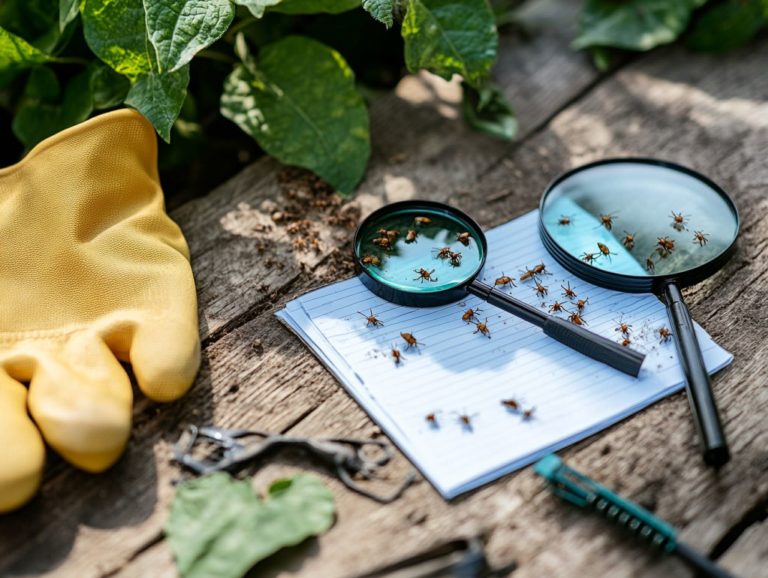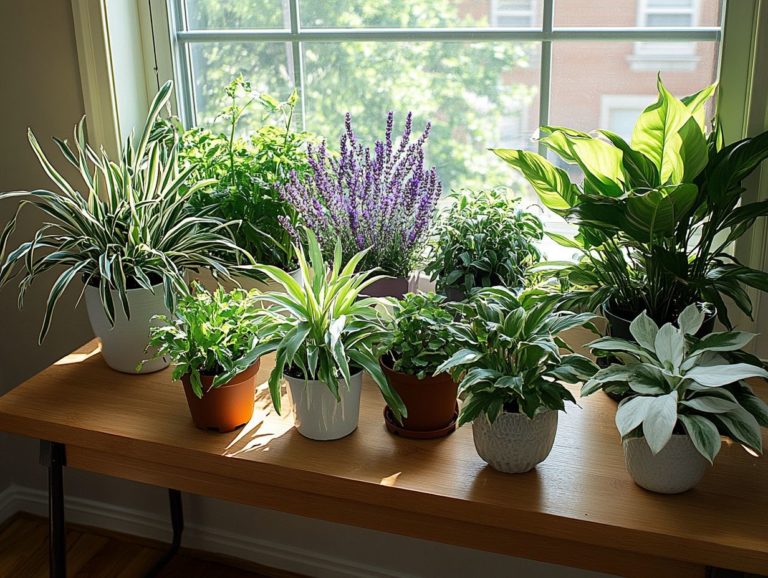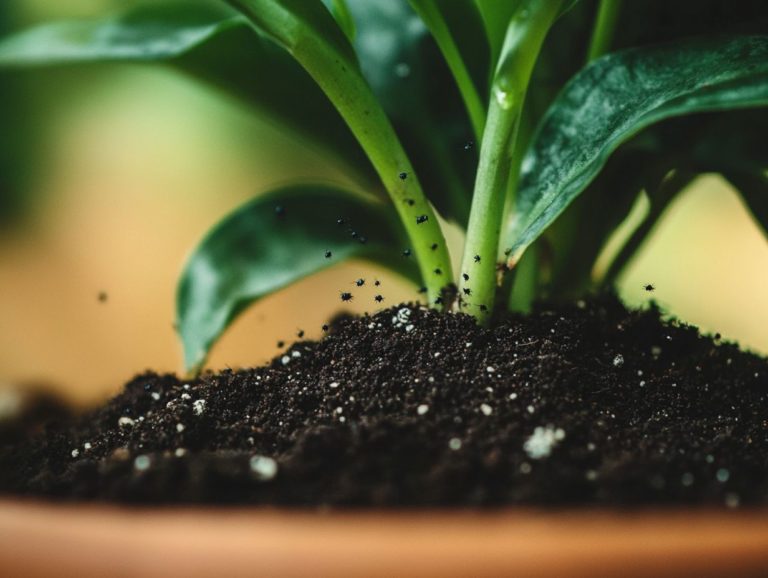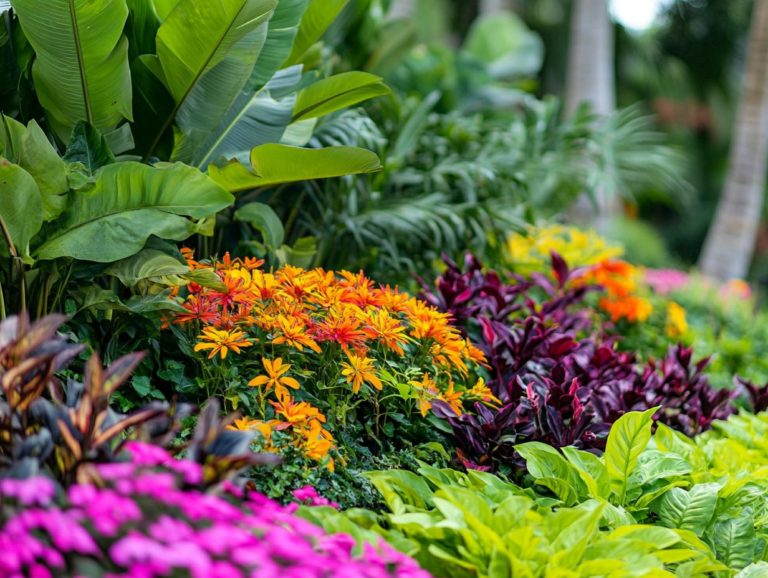The Life Cycle of Common Indoor Plant Pests
Indoor plants bring joy to your space, but pests like mealybugs and aphids can ruin the fun! These pests often lurk in the shadows, making it essential for plant owners to know how pests grow and thrive.
To effectively manage these unwelcome visitors, you must know how pests grow. From the initial egg stage to their full-grown adult form, each stage presents unique challenges that you must navigate.
Checking for signs of infestation and recognizing pest damage is crucial for any plant owner. Focus on prevention and look for treatment options to ensure your indoor garden remains lush and thriving.
Contents
Key Takeaways:
Here s what you need to know to keep your plants happy and healthy!
- Regularly inspect plants for signs, such as yellowing leaves or webbing.
- Knowing how plant pests grow helps you prevent and treat infestations.
- A mix of methods to control pests, along with beneficial insects like ladybird beetles, can help keep common indoor plant pests at bay.

Common Types of Pests
Common pests can significantly impact your plants’ health, whether they’re indoors or in your vegetable garden. Pests like mealybugs, aphids, scale insects (Coccidae, Diaspididae), and spider mites can escalate into serious infestations if not managed effectively.
Gaining a solid understanding of these pests is crucial for maintaining plant health and ensuring your home garden thrives beautifully. Consider using traps for indoor plant pests as an effective strategy in your pest management approach.
Life Cycle of Plant Pests
Grasping the life cycle of plant pests is essential for mastering effective pest control and prevention strategies in your indoor gardening and home gardens. By recognizing the distinct stages egg, larvae, pupa, and adult you enable yourself to detect pest infestations early and deploy targeted interventions.
This knowledge enhances your gardening experience and ensures your plants thrive in a pest-free environment.
Egg Stage
The egg stage is where pests start. Tiny eggs are often hidden on plant surfaces, making them tricky to find.
Checking the undersides of leaves regularly lets you catch these pests early. Look for culprits like aphids, spider mites, and whiteflies, which prefer to lay their eggs in discreet spots that blend into the foliage.
If you spot them early, you can introduce natural predators like ladybugs or green lacewing larvae or use homemade solutions like neem oil, a natural oil that helps keep pests away.
Employing prevention techniques, such as keeping your plants clean and ensuring proper airflow, can significantly reduce the chances of pests making themselves at home.
Larvae Stage
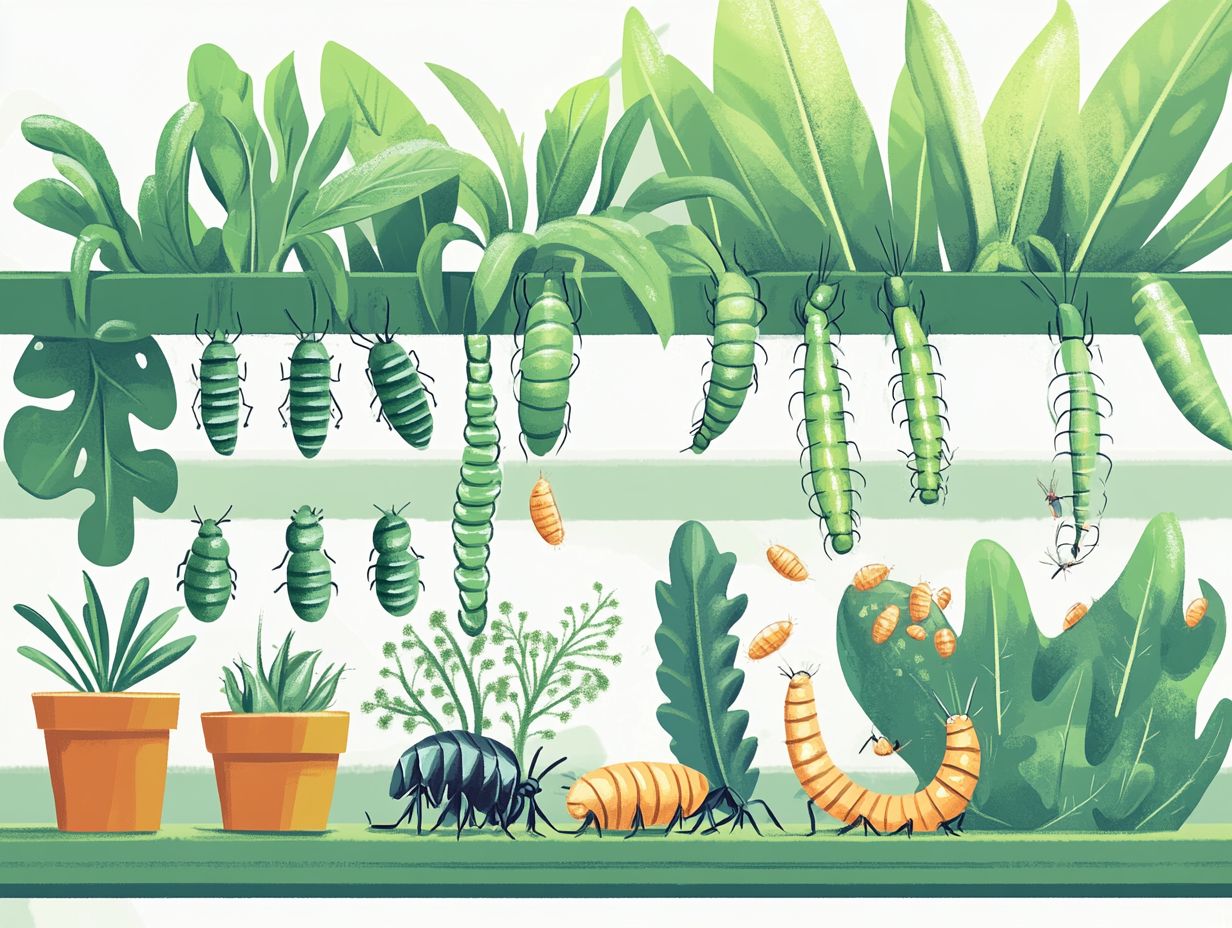
In the larvae stage, pests like aphids start munching on your plants. If ignored, they can cause big problems.
These tiny yet formidable invaders have soft bodies and rapid reproduction rates. Look for distorted leaves and sticky residues to spot them.
Their relentless feeding weakens your plants and can create entry points for diseases, leading to even more complications.
Effective control methods are available, ranging from introducing natural predators like ladybugs to using insecticidal soaps. By maintaining optimal plant health, you can significantly mitigate the impact of these larvae, emphasizing the importance of proactive management strategies in your gardening repertoire.
Pupa Stage
The pupa stage acts as an important transition phase in the life cycle of pests. Larvae undergo metamorphosis into adults, often concealed from sight, which complicates pest identification.
This phase is vital, as significant physical changes unfold during this time, influencing the characteristics and behavior of the emerging adult insects. The duration of this stage varies widely among different species, lasting anywhere from just a few days to several weeks, depending on environmental conditions and specific traits of the species.
Monitor potential pupation sites closely to manage pest populations effectively. Being aware of signs that indicate impending adult emergence will enable you to intervene promptly, ensuring that pests do not establish themselves and disrupt local ecosystems or agricultural yields.
Adult Stage
Once pests reach adulthood, they gain the ability to reproduce, which significantly heightens the risk of infestations in your garden or home if you don t take proactive pest control measures.
Adult pests have traits that make them difficult to control. Their remarkable adaptability to various environments and efficient mating behaviors can lead to rapid population growth in no time. For instance, many insects engage in intricate mating rituals involving chemical signals used to attract mates or elaborate displays, attracting large numbers of potential mates.
Combat these challenges head-on! It’s crucial for you to adopt strong pest control methods tailored to both your indoor and outdoor spaces. This means regularly inspecting your living areas, employing traps, utilizing natural predators, and integrating pesticide applications when necessary, all designed to disrupt the lifecycle of indoor pests and maintain a pest-free environment.
Signs of Infestation
Recognizing the signs of infestation is essential for preserving the health of your plants and preventing extensive damage from pests in your home or vegetable garden. Look out for common indicators:
- Yellowing leaves
- Wilting
- Honeydew or webbing
These symptoms highlight the urgent need for effective control.
Identifying Pest Damage
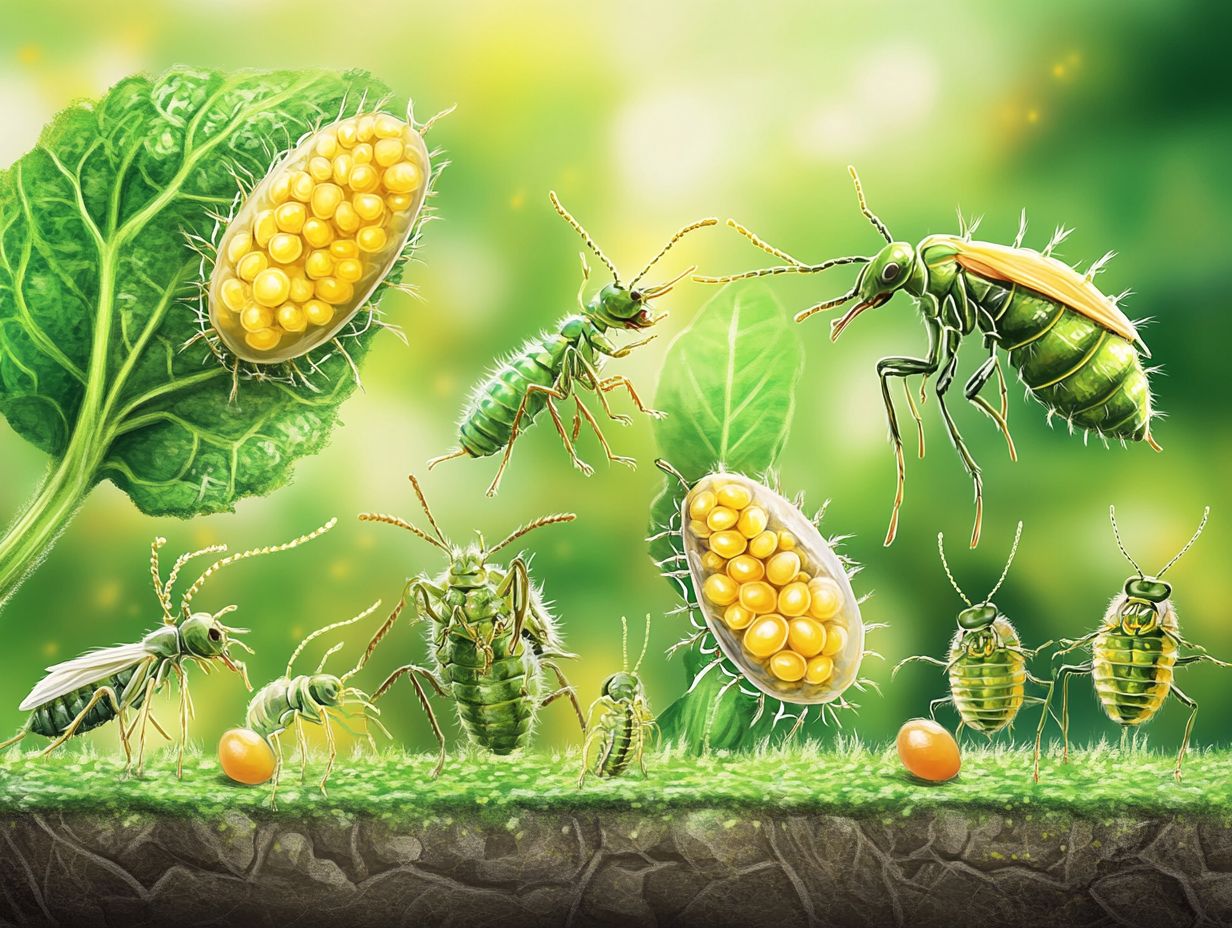
Identifying pest damage is essential for effective control. Familiarize yourself with the specific symptoms linked to common culprits like spider mites and aphids, which can seriously undermine plant health.
As a gardener, keep an eye out for telltale signs. Stippling or yellowing leaves are clear indicators of spider mite trouble, while sticky residue left by aphids, a sugary byproduct, can attract even more pests. Other offenders, like caterpillars and locusts, tend to create visible holes or notches in the foliage. You’ll often find these pests targeting beloved plants, from tomatoes and cucumbers to ornamental roses. To effectively deal with these issues, consider using traps to manage indoor plant pests.
To tackle these pests effectively, consider strategies such as introducing natural predators like *Cryptolaemus montrouzieri*, applying insecticidal soap, or using neem oil, a natural oil that helps control many pests. For more information on the top 5 most destructive indoor plant pests, these methods can help you manage infestations and create a healthier environment for your plants to thrive, especially in your vegetable garden and home garden.
Preventing and Treating Plant Pests
Preventing and treating plant pests is crucial for sustaining a vibrant home garden and a flourishing indoor gardening space. You can achieve this by employing a harmonious blend of organic solutions, targeted insecticides, and combined pest control methods to effectively tackle any pest challenges that arise.
Your commitment to these practices will ensure a thriving garden that’s both healthy and productive, encouraging a sustainable ecosystem.
Preventive Measures
Implementing effective preventive measures is essential for pest control. This allows you to safeguard your plants from harmful pests by leveraging beneficial insects like *Phytoseiulus* sp. and organic solutions using Bacillus thuringiensis.
Incorporating techniques like crop rotation can disrupt pest life cycles. This makes it significantly harder for them to establish themselves in your garden soil.
Companion planting is another powerful strategy that fosters beneficial relationships among plants. Certain species can deter pests or attract natural predators. For instance, ladybird beetles and green lacewing larvae actively feast on aphids and other unwanted pests, creating a healthier garden environment.
By diversifying your plant variety and understanding the ecosystem within your garden, you can naturally bolster resilience against infestations. This results in a flourishing and vibrant space.
Effective Treatment Options
Facing pest infestations? It’s time to explore effective treatment options! Consider both insecticides and organic solutions, such as Diatomaceous earth, to maintain the health of your plants.
As a home gardener, you may find yourself at a pivotal moment when choosing the best approach to combat pests. Chemical insecticides can be highly effective in eliminating issues but may inadvertently threaten beneficial insects and disrupt the surrounding ecosystem.
While chemical insecticides provide quick results, careful reapplication is necessary to maintain effectiveness.
On the flip side, organic solutions like neem oil and insecticidal soap offer more environmentally conscious alternatives. These methods target harmful pests while protecting helpful ones. Be prepared! Organic treatments often need more frequent applications to keep pests at bay!
Ultimately, your decision between these treatments depends on safety considerations, potential environmental impact, and the specific needs of your home garden.
Frequently Asked Questions
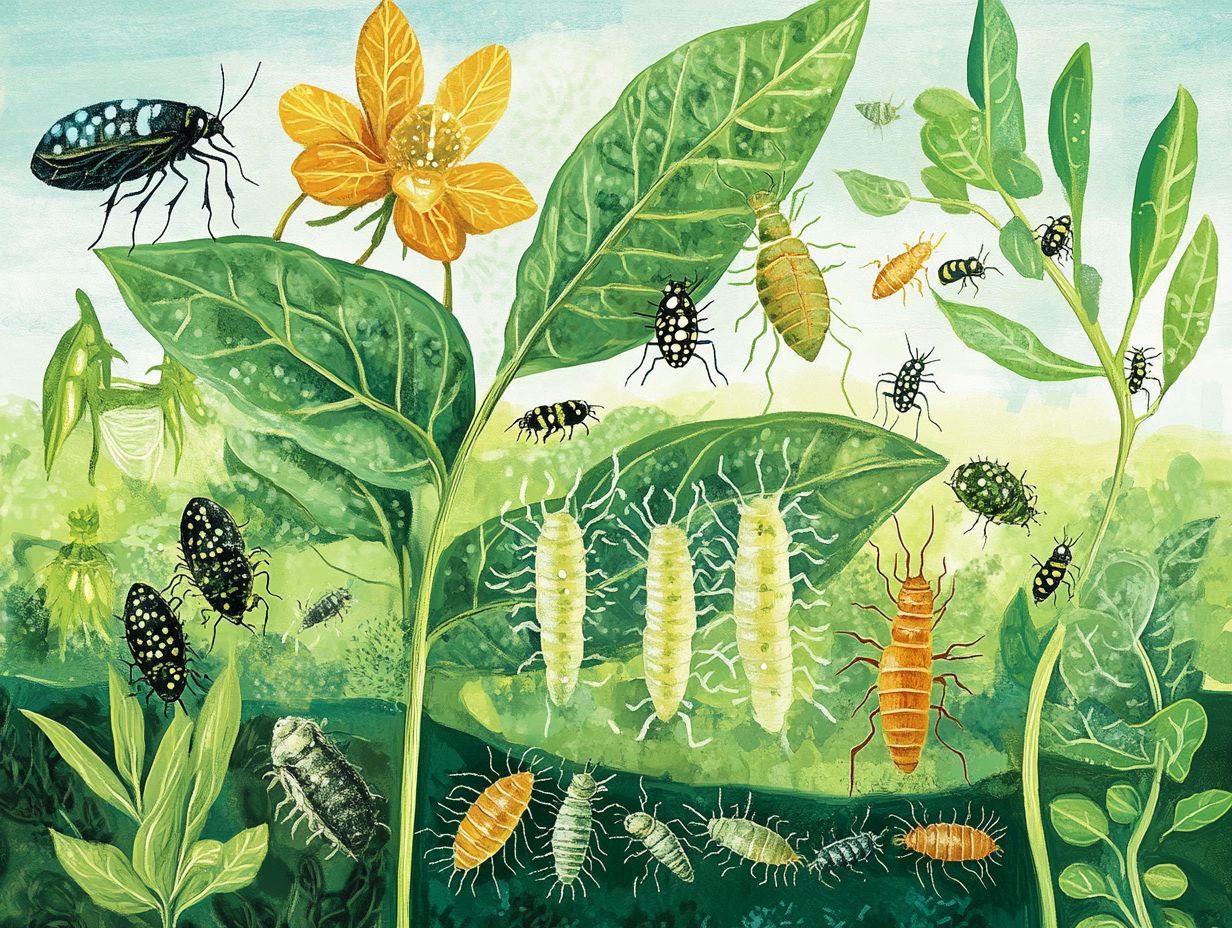
What are common indoor plant pests?
Common indoor plant pests include aphids, spider mites, whiteflies, mealybugs, scale insects, and fungus gnats.
What is the life cycle of these pests?
The life cycle of common indoor plant pests typically involves four stages: egg, larva/nymph, pupa, and adult.
How do these pests reproduce?
Most common indoor plant pests reproduce by laying eggs, which then hatch into larvae or nymphs. These immature forms go through several stages in their life cycle before becoming adults and reproducing again.
Why are your plants attracting pests?
Common indoor plant pests are attracted to warm, humid environments, new plant growth, and weakened plants. Overcrowding, lack of proper air circulation, and poor soil quality can also contribute to pest infestations.
How can I identify if my indoor plants have a pest infestation?
Look for signs like yellowing or wilting leaves, sticky residue, or tiny insects on the plant. Use a magnifying glass to inspect the plant closely for pests and their eggs.
What are effective ways to control and prevent these common pests?
Effective methods for controlling and preventing common indoor plant pests include regularly inspecting and cleaning your plants. You can use natural predators like ladybird beetles and green lacewing larvae, practice proper watering and fertilizing techniques, and use insecticidal soaps or oils as a last resort.
Methods like Diatomaceous earth and Bacillus thuringiensis are also effective. Keeping a clean and healthy indoor environment can help prevent infestations.

